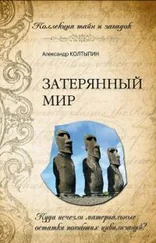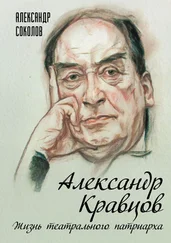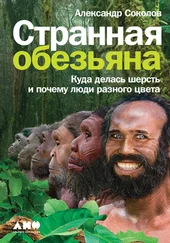
Что еще сделать для помощи нашим проектам:
— подписаться на наш канал АНТРОПОГЕНЕЗ.РУ на YouTube;
— приходить на форумы «Ученые против мифов», проходящие в Москве и Санкт-Петербурге;
— если вы петербуржец, приглашаю на мероприятия лектория «Научная станция»;
— спасибо, если вы поддержите проекты АНТРОПОГЕНЕЗ.РУ на Patreon.
Контакт:
Александр Соколов
sobros@mail.ru
https://vk.com/chieffffff
https://www.facebook.com/chiefffff
Да поможет нам сила настоящей науки!
Часть I. Потеющая обезьяна
Глава 1. Мы — странные приматы
1. Lieberman D. E. Human Locomotion and Heat Loss: An Evolutionary Perspective // American Physiological Society. Comprehensive Physiology (2015), 5: 99–117.
2. Hamilton J. B. Age, Sex, and Genetic Factors in the Regulation of Hair Growth in Man: a Comparison of Caucasian and Japanese Populations. The Biology of Hair Growth. New York: Academic Press, 1958.
3. Randall V. A., Sundberg J. P., Philpott M. P. Animal And in vitro Models for the Study of Hair Follicles // Journal of Investigative Dermatology Symposium Proceedings (June 2003), 8 (1): 39–45.
4. Kligman A. M. The Human Hair Cycle // Journal of Investigative Dermatology (1959), 33: 307–316.
5. Loussouarn G., Pharm D., El Rawadi C., and Genain G. Diversity of Hair Growth Profiles // International Journal of Dermatology (2005), 44 (Suppl. 1): 6–9.
6. Khumalo N. P., Doe P. T., Dawber R. P. R., and Ferguson D. J. P. What is Normal Black African Hair? A Light And Scanning Electron-Microscopic Study // Journal of the American Academy of Dermatology (2000), 43 (5).
7. Linus the Long-Haired Wonder Horse // Scribol (May 2018). https://scribol.com/environment/animals-environment/linus-the-long-haired-wonder-horse/.
8. Uno H., Kenji Adachi, Ph.D., and Montagna W. Baldness of the Red Uacari (Cacajao Rubicundus): Histological Propertiesand Enzyme Activities of Hair Follicles // Journal of Gerontology (Jan 1969), 24 (1): 23–27.
9. De Beer S. G. Embryos and Ancestors. Clarendon Press, 1962, p. 51.
Глава 2. Шерсть, которую мы потеряли
1. Gilligan I. The Prehistoric Development of Clothing: Archaeological Implications of a Thermal Model // Journal of Archaeological Method and Theory (2010), 17: 15–80.
2. Сайт Московского зоопарка. Японский макак. http://www.moscowzoo.ru/animals/mlekopitayushchie/yaponskiy-makak/(дата обращения: 15.04.2020).
3. Inagaki H., Hamada Y. Differences in Hair Density of Japanese Monkeys (Macaca Fuscata Fuscata) with Localityand Age // Primates (Jan 1985), 26(1): 85–90.
4. Dunbar R. I. M. Group Size, Vocal Grooming and the Origins of Language // Psychonomic Societ y, Inc. (2016).
Глава 3. У кого волос меньше?
1. Schultz A. H. The Density of Hair in Primates // Human Biology (Sept 1931), 3 (3): 303–321.
2. Meyer-Lierheim F. Die Dichtigkeit der Behaarung beim Fetus des Menschen und der Affen // Zeitschrift für Morphologie und Anthropologie (1910), Bd. 13, H. 1: 131–150. Published by: E. Schweizerbart’sche Verlagsbuchhandlung.
3. Schwartz G. G. and Rosenblum L. A. Allometry of Primate Hair Density and the Evolution of Human Hairlessness // American Journal of Physical Anthropology (1981), 55 (1): 9–12.
4. Sandel A. A. Brief Communication: Hair Density and Body Mass in Mammals and the Evolution of Human Hairlessness // American Journal of Physical Anthropology (2013), 152: 145–150.
5. Szabo G. The Regional Anatomy of the Human Integument with Special Reference to the Distribution of Hair Follicles, Sweat Glands and Melanocytes // Philosophical Transactions of the Royal Society of London. B (1967), No. 779: 252, 447–485.
Глава 4. Но зачем?
1. Wallace A. R. Contributions to the Theory of Natural Selection. A Series of Essays. New York, 1872.
2. Соколов А. Б. Ученые скрывают? Мифы XXI века. — М.: Альпина нон-фикшн, 2018.
3. Darwin C. The Descent of Man, and Selection in Relation to Sex. New York: D. Appleton and Company, 1889, p. 56–58.
4. Соколов А. Б. Австралопитек хватался ногами за ветки, как современный человек // XX2 век. 2018. 17 декабря. https://22century.ru/allsorts/72754.
5. Соколов А. Б. Мягкие ткани австралопитека. Открытый научный проект // АНТРОПОГЕНЕЗ.РУ. 10.09.2011. http://antropogenez.ru/single-news/article/126/.
Глава 5. По одежке протягивай шерстку
1. Knight A. P. Hair // Queen’s Quarterly , 1904.
2. Glass B. Evolution of Hairlessness in Man // Science (1966), 152 (3720): 294.
3. Brace C. L., Hailman J. P., Kennington G. S., Hershkovitz Ph., Olson W. S. What Ever Happened to Hairy Man? // Science (1966), 153 (3734): 362–364.
4. Chatterjee S. K. The Pattern of Indian Clothing in Relation to Tropical Climate // Journal of Human Evolution (1978), 7: 95–99.
5. Gilligan I. Another Tasmanian Paradox: Clothing and Thermal Adaptations in Aboriginal Australia. BAR International Series. Oxford: Archaeopress, 2007.
6. Wyndham C. H. and Morrison J. F. Adjustment to Cold of Bushmen in the Kalahari Desert // Journal of Applied Physiology (1958), 13: 219–225.
7. Gilligan I., Bulbeck D. Environment and Morphology in Australian Aborigines: A Re-analysis of the Birdsell Database // American Journal of Physical Anthropology (2007), 134: 75.
8. Gilligan I. Clothing and Modern Human Behaviour: Prehistoric Tasmania as a Case Study // Archaeology in Oceania (Oct 2007), 42 (3): 102–111.
9. Kushlan J. A. The Evolution of Hairlessness in Man // American Naturalist (Nov 1980), 116 (5): 727–729.
10. Kushlan J. A. The Vestiary Hypothesis of Human Hair Reduction // Journal of Human Evolution (1985), 14: 29–32.
11. Chatterjee S. K. The Pattern of Indian Clothing in Relation to Tropical Climate // Journal of Human Evolution (1978), 7: 95–99.
Читать дальше
Конец ознакомительного отрывка
Купить книгу
![Александр Соколов Странная обезьяна [Куда делась шерсть и почему люди разного цвета] обложка книги](/books/396704/aleksandr-sokolov-strannaya-obezyana-kuda-delas-sh-cover.webp)










